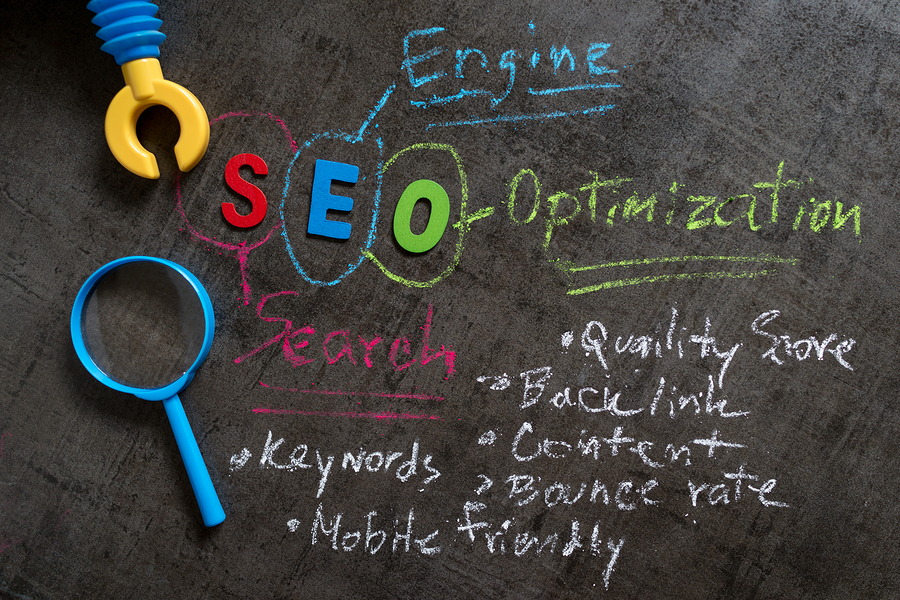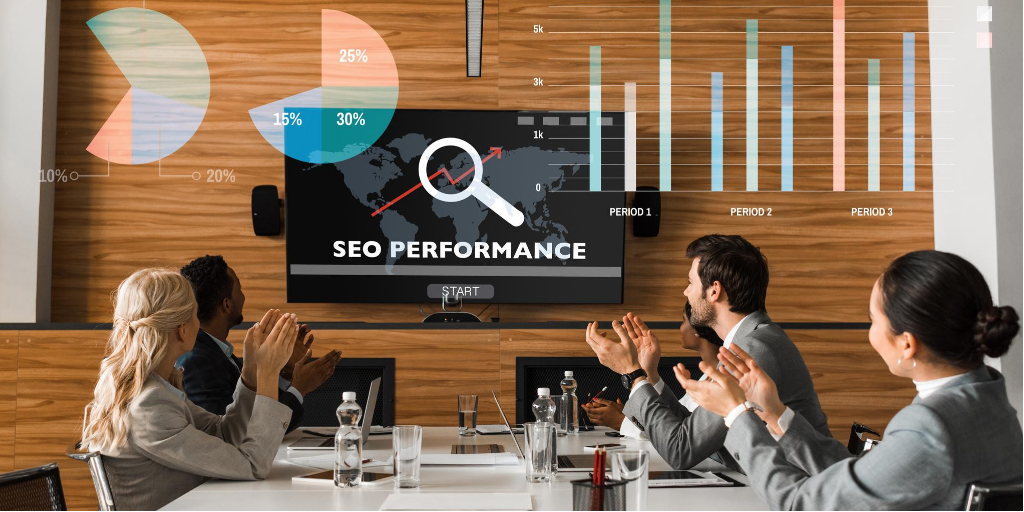On-page seo techniques include optimizing website content, url structure, meta tags, images, and internal links. These techniques help improve a website’s ranking in search engine results pages (serps).
Implementing correct on-page seo techniques is crucial for businesses to generate more traffic and organic leads for their website. It is considered one of the most critical aspects of seo, as it directly affects a website’s reputation and authority in the eyes of search engines.
In this article, we will cover some of the best practices for on-page seo that can help improve a website’s visibility and rank higher in serps.

Credit: www.crazyegg.com
Keyword Research And Analysis
Why Keyword Research Is Important For On-Page Seo
Keyword research is the foundation of any effective on-page seo strategy. By identifying the phrases and terms your target audience is searching for, you can create content that matches their search intent and optimizes your website for improved visibility in search engine results pages (serps).
The benefits of keyword research for on-page seo are significant. Getting it right can improve your website’s ranking in serps, attract more traffic, and increase conversions and revenue.
How To Find The Right Keywords To Target
Finding the right keywords to target requires a combination of understanding your audience and conducting thorough research using keyword tools.
Start by brainstorming a list of words and phrases relevant to your business or niche. Then, expand your list using keyword tools such as google keyword planner, moz keyword explorer, or semrush. These tools can help you identify related topics and phrases, as well as provide data on keyword search volume, competition, and trends.
Another effective strategy is to conduct competitor analysis and see which keywords they are targeting. Analyzing your competitors’ content and keywords can give you ideas for your own content and help you to create a more effective on-page seo strategy.
Using Long-Tail Keywords And Their Benefits
Long-tail keywords are longer and more specific phrases that have less competition and are more targeted to a specific audience. Using long-tail keywords has several benefits for on-page seo as it helps to attract highly targeted traffic, increase conversion rates, and improve your website’s ranking in serps.
When choosing a long-tail keyword, consider the search intent and focus on those who are more likely to convert. Use specific phrases that describe the products or services you offer or the pain points that your target audience faces.
Tools To Use For Keyword Research And Analysis
Keyword research tools provide valuable insights into the language your target audience uses when searching for products or services. These are a few of the most popular tools to use:
- Google keyword planner: A free tool that helps you discover new keywords and provides data on search volume and competition.
- Moz keyword explorer: A paid tool that offers extensive research and analysis on keyword data, serp features, and competitor data.
- Semrush: A paid tool that offers comprehensive analytics, including keyword research, backlinks analysis, and competitor insights.
Using keyword research tools can help you to identify new keywords, understand search volume trends, and fine-tune your on-page seo strategy for improved results.
Optimizing Page Titles And Meta Descriptions
On-Page Seo Techniques: Optimizing Page Titles And Meta Descriptions
When it comes to on-page seo, optimizing your page titles and meta descriptions is essential for driving traffic to your website. These elements are the first things that users see on search engine results pages (serps) and they provide crucial information about your website that can affect click-through rates and overall search visibility.
In this section, we’ll cover the importance of page titles and meta descriptions and provide tips for writing compelling and seo-friendly titles and descriptions.
Importance Of Page Titles And Meta Descriptions For On-Page Seo
Page titles and meta descriptions have a direct impact on your website’s search engine rankings and click-through rates. Here are some reasons why they are important for on-page seo:
- Page titles and meta descriptions act as a summary of what your page is about, so users can quickly understand if it’s relevant to their search query.
- They provide important keywords that search engines use to determine the subject matter of your page.
- Properly optimized titles and descriptions can lead to higher click-through rates (ctr) and lower bounce rates, which can positively impact your search engine rankings.
- They can also help differentiate your website from competitors and entice users to choose your page over others on the serp.
How To Write Compelling And Seo-Friendly Page Titles
Here are some tips for writing effective page titles that are both engaging and optimized for search engines:
- Keep titles brief, ideally less than 60-70 characters, to ensure they don’t get truncated on serps.
- Incorporate the primary keywords that you want to rank for, but also focus on creating a title that is engaging and informative for users.
- Avoid using clickbait or misleading titles that could negatively impact your website’s credibility.
- Use modifiers like “best,” “top,” or “guide” to make titles more compelling and increase the likelihood of clicks.
- Don’t use the same title for multiple pages on your website. Each page should have a unique and descriptive title.
How To Write Compelling And Seo-Friendly Meta Descriptions
Writing effective meta descriptions is essential for encouraging users to click on your page from the serp. Here are some tips for writing compelling meta descriptions:
- Keep it brief, ideally around 155-160 characters, to ensure it doesn’t get truncated on serps.
- Incorporate the primary keywords you want to rank for, but also provide a clear and concise summary of what the page is about.
- Use action-oriented language to encourage clicks, such as “learn more” or “discover now.”
- Avoid using special characters, all caps, or excessive punctuation that can make the description look spammy.
- Make sure that your meta descriptions accurately reflect the content on the page and avoid misleading users.
Best Practices For Optimizing Page Titles And Meta Descriptions
Here are some best practices to follow when optimizing your page titles and meta descriptions:
- Use a unique title and meta description for each page on your website to avoid confusion.
- Incorporate your primary keyword into the title and meta description, but also focus on creating content that is engaging and useful for users.
- Don’t duplicate titles or descriptions across multiple pages, as this can negatively impact your website’s search engine rankings.
- Monitor your click-through rates and make adjustments to your titles and descriptions if they are not generating enough clicks.
- Keep your titles and descriptions up to date and make changes as necessary to reflect changes in your content or search engine algorithm updates.
By optimizing your page titles and meta descriptions, you can improve your website’s search engine rankings and increase click-through rates. Follow these tips to create compelling and seo-friendly titles and descriptions that attract users and improve your website’s overall search visibility.
Creating High-Quality Content
Creating High-Quality Content: The Key To On-Page Seo Success
As the saying goes, “content is king,” and that’s certainly true when it comes to on-page seo. High-quality content not only engages and converts visitors, but it also helps your website rank higher in search engine results pages (serps). In this section, we’ll discuss how to create great content that attracts both visitors and search engines.
Importance Of High-Quality Content For On-Page Seo
High-quality content is critical for on-page seo success. Here are a few reasons why:
- Quality content signals authority: Google places a high value on quality content that satisfies user intent. If your content is informative and useful to the reader, google sees it as authoritative and is more likely to rank your site higher.
- Quality content attracts backlinks: Other websites are more likely to link to your site if you produce quality content. These backlinks are essential for boosting your authority and increasing your online visibility.
- Quality content engages readers: Engaging content is essential to reducing your bounce rate and improving your time-on-site metrics. The more time a visitor spends on your site, the more likely they are to convert into a customer.
How To Create Content That Engages And Converts Visitors
Creating content that engages and converts visitors takes practice but is achievable. Here’s how you can do it:
- Start with keyword research: Understanding what your target audience is searching for is essential to creating effective content. Conduct keyword research to identify relevant, high-volume keywords.
- Write compelling headlines: Your headline is the first thing a visitor sees before clicking through to your content. Make sure it’s attention-grabbing and accurately reflects the content on the page.
- Use formatting: Break your content up into short paragraphs, headlines, and bullet points to make it easier to read. Use images where possible to reinforce your message visually.
- Be conversational: Write your content in a conversational style, as if you’re speaking to your target audience. Don’t be afraid to inject your personality into your writing, either.
- Use calls-to-action: End your content with a clear call-to-action (cta) that encourages visitors to take the next step.
Tips For Improving Content Readability And Formatting
Readable, well-formatted content is essential for keeping visitors on your site and encouraging sharing. Here are some tips for improving your content’s readability and formatting:
- Use short, concise sentences: Readers find it easier to digest your content when sentences are shorter and more straightforward.
- Break up your text: Use subheadings, bullet points, and images to break up your content into smaller, more accessible chunks.
- Use white space: Too much text can be overwhelming to read. Use white space around your text to give readers’ eyes a break.
- Use a readable font: Use a font that is easy to read and doesn’t strain readers’ eyes.
- Choose a color scheme: Use a color scheme that is easy on the eyes and doesn’t distract from your content.
Best Practices For Optimizing Content With Keywords And Subheadings
Optimizing your content with keywords and subheadings is essential to rank higher on serps. Here are some best practices to keep in mind:
- Use keywords in your content: Use your keyword throughout your content, but don’t overuse it. Keyword stuffing can hurt your seo.
- Use subheadings: Use subheadings to break your content into sections. Make sure to use h2 and h3 subheadings to make it easier for search engines to crawl your site.
- Keep it natural: Your content should read naturally and not seem forced. Keywords should fit smoothly into your content.
- Use synonyms: Use synonyms and related keywords throughout your content to create depth and comprehensiveness.
Remember, producing high-quality content takes time and effort but is well worth it for improved rankings and customer engagement. By following these tips, you’ll be well on your way to creating content that satisfies both search engines and your target audience.
Optimizing Images And Videos
Importance Of Optimizing Images And Videos For On-Page Seo
Images and videos have become an integral aspect of the online experience, and optimizing them is crucial for improving the overall on-page seo of your website. Some of the key reasons why image and video optimization is essential are:
- Proper optimization can lead to faster page loading times, which is a critical seo factor
- Optimized images and videos can appear in image and video search results, giving your website an additional opportunity to be discovered by users
- Well-optimized images and videos can improve the user experience, making it more likely that visitors will spend more time on your site
How To Optimize Image File Names, Alt Tags, And Captions
Optimizing your images can significantly impact your website’s seo. Here are some key tips for optimizing your images:
- Use descriptive file names that accurately reflect the image’s content. Avoid generic file names like “image123.jpg,” as they don’t provide any value to search engines or users.
- Add alt tags that describe the image’s content using relevant keywords. Alt tags help search engines understand what the image is about and are also used by screen readers to help visually impaired users understand the content.
- Adding captions to your images can provide additional context for users and also give search engines more information about your content, making it easier to rank in image searches.
How To Optimize Video File Names, Descriptions, And Transcripts
Here are some key tips for optimizing your videos:
- Use descriptive file names that accurately reflect the video’s content. Avoid using generic names like “video123.mp4,” as they don’t provide any value to search engines or users.
- Write compelling descriptions for your videos that include relevant keywords. The description should be brief but informative, giving users a good idea of what the video is about.
- Including transcripts for your videos can provide additional value to users who might prefer reading the content instead of watching it. Additionally, search engines can read transcripts, which allows them to better understand and rank your video.
Best Practices For Image And Video Optimization
To ensure optimal image and video optimization, here are best practices that you can follow:
- Compress images and videos to reduce file size without compromising quality. This can help reduce page loading times, which can impact your site’s seo.
- Use appropriate image and video formats that are supported by most browsers and devices.
- Use descriptive and concise titles and descriptions for all images and videos.
- Use image sitemaps and video sitemaps to help search engines discover and index your multimedia content.
- Ensure that your website is mobile-friendly and responsive, as mobile users account for a significant percentage of internet traffic.
By following these tips, you can improve the overall on-page seo of your website, helping to increase its visibility and drive more traffic to your site.
Improving Site Speed And Mobile Responsiveness
Importance Of Site Speed And Mobile Responsiveness For On-Page Seo
In today’s digital age, having a website that loads quickly and is mobile-friendly is a necessity. Not only do these factors significantly impact the user experience, but they also play a crucial role in boosting on-page seo. Here’s why:
- Google loves fast-loading websites: Site speed is an essential ranking factor. A slow website equates to a poor user experience, which google doesn’t like. Improved site speed means a better user experience, higher engagement levels, and ultimately higher chances of ranking higher on serps.
- Mobile-responsive websites are a must-have: With over 60% of online searches now conducted on mobile devices, responsive design has become a critical ranking factor in google’s algorithm. Websites that are optimized for mobile devices get preference over those that are not.
How To Improve Site Speed Using Caching And Optimization Techniques
Here are some effective strategies to optimize your website for speed:
- Use caching: Caching temporarily stores frequently accessed data on a user’s device, reducing the need to reload the same information every time the user visits your site. This results in faster loading times, improved website performance and an overall better user experience.
- Optimize images and videos: Large media files can significantly slow down your website. Optimize images by compressing them, reducing file size, and using appropriate image file types. You can also use video hosting services like youtube or vimeo to host your videos.
- Reduce the number of plugins: Since plugins can slow down your site’s loading speed, reducing them can help improve your site speed. Deactivate or remove any plugins that are not essential for your site’s operation.
How To Optimize Your Website For Mobile Devices
Here are some best practices for mobile optimization:
- Use a responsive design: Responsive design adjusts the layout of your website to fit the screen size of the device it’s being viewed on. Adopting a responsive design is one of the most effective ways to ensure your website is optimized for mobile devices.
- Ensure text is readable: Make sure the text on your website is readable on mobile devices. Use fonts that are easy to read, and ensure that there is adequate contrast between the text and the background.
- Simplify navigation: Navigation should be simplified for mobile devices to make it easier for users to find what they are looking for. Use dropdown menus and minimize the number of clicks required to reach a specific page.
Best Practices For Improving Site Speed And Mobile Responsiveness
Here are some quick tips to improve site speed and mobile responsiveness:
- Use website speed testing tools to evaluate your website’s current performance, identify any issues, and suggest recommendations for optimization.
- Use a content delivery network (cdn) to reduce server response times and speed up website loading times.
- Use browser caching to store frequently accessed web page resources on the user’s device, reducing load times on each visit.
- Optimize your website’s code, including css and javascript files, to reduce file size and loading times.
- Minimize the use of pop-ups, which can be frustrating to users on mobile devices.
Improving site speed and mobile responsiveness is critical for on-page seo. By implementing the strategies outlined above, you can optimize your website for speed and mobile devices, resulting in better search engine rankings, improved user experience, and higher engagement levels.
Frequently Asked Questions Of On-Page Seo Techniques
What Are On-Page Seo Techniques?
On-page seo refers to the process of optimizing a webpage to improve its search engine ranking. This includes optimizing content, urls, titles, images, and other on-page elements.
Why Is On-Page Seo Important?
On-page seo is important because it helps search engines understand the website content, which ultimately improves the website’s search engine ranking. Additionally, it helps the website appear relevant to users and boosts user experience.
What Are Some On-Page Seo Best Practices?
On-page seo best practices include developing high-quality content, optimizing page titles and meta descriptions, utilizing header tags, improving website speed, and conducting keyword research.
How Does Content Impact On-Page Seo?
Content impacts on-page seo as search engines analyze the content on a webpage to determine relevancy and usefulness to the user. The content’s relevance to the target audience and the proper use of keywords significantly impact website ranking.
How Do Header Tags Improve On-Page Seo?
Header tags break down the content into sections and help search engines understand the hierarchy and organization of the content. Proper use of header tags improves website structure, user experience, and ultimately, search engine ranking.
Can Images Affect On-Page Seo?
Yes, images can impact on-page seo as they contribute to a website’s overall usability and relevance. Properly named, optimized images help search engines understand the context of the content and ultimately improve the website’s search engine ranking.
Conclusion
On-page seo techniques are a crucial part of improving your website’s search engine rankings. Incorporating relevant keywords, optimizing your content, and ensuring your website is user-friendly can greatly impact your site’s visibility and overall success. Remember to use header tags, include internal and external links, and regularly update your content to keep it fresh.
Furthermore, pay attention to your website’s loading speed and mobile optimization to provide a seamless user experience. Keeping these techniques in mind and implementing them consistently can lead to increased traffic to your website and ultimately, higher conversion rates. Happy optimizing!




